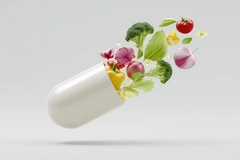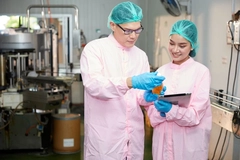Toxic baby foods: Experts urge for increased research and regulations in the US

03 Feb 2023 --- US-based researchers have found a high likelihood that some of the most popular baby products in supermarkets – rice cereals, infant formula, puffs and purees – contain the toxic chemicals arsenic, lead, mercury and cadmium. The researchers from University at Buffalo (UB), New York, stress that there is a lack of strict regulations for these commercial products.
“It is concerning that there are gaps in food contaminant federal guidelines, particularly for baby foods. Parents might expect and trust that their infant’s commercially produced baby foods are automatically protected by tightly regulated guidelines, but that is just not the case,” says Sarah Ventre, lead author of the study and clinical assistant professor at the department of pediatrics in the Jacobs School of Medicine and Biomedical Sciences at UB.
The researchers decided to study further the widespread phenomenon that baby foods contain toxic chemicals, which according to Ventre, gained attention in 2019. After reviewing recent studies, they found a recurring presence of arsenic, lead, mercury and cadmium in common baby foods.
 Since infants are especially vulnerable to toxins exposure, more research is required to determine implications for future health. Too large of a problem and too slow of a solution?
Since infants are especially vulnerable to toxins exposure, more research is required to determine implications for future health. Too large of a problem and too slow of a solution?
In 2019, the US Food and Drug Administration (FDA) developed a plan to tackle foods containing lead. However, the researchers argue that the other common toxins were not included.
“As a pediatrician, I aim to provide parents with the tools to keep their children healthy and safe,” says Ventre.
The lack of action on all toxins led to concerns that regulatory changes are not coming “quickly enough.”
The researchers further note that when toxic elements are ingested with food or water, they get absorbed in the gastrointestinal tract, which allows them to enter the bloodstream. This is concerning, as the toxic elements can be found in infant formula, breast milk, water, fruits, vegetables and homemade and commercial purees.
They continue to stress that infants are especially vulnerable to toxins exposure and urge more research to determine the extent to which exposure at such an early age has implications for future health.
The limited existing research suggests that cognitive function decline, “difficult” personality traits and lower socioeconomic status have been linked with lead exposure. Meanwhile, the researchers argue that lung and bladder cancers in adulthood have been linked with arsenic ingestion.
“We know that a wide range of foods is contaminated and that higher consumption of those foods is related to body levels of those contaminants in children,” says Katarzyna Kordas, co-author and associate professor of epidemiology and environmental health in UB’s School of Public Health and Health Professions.
“But does the exposure to contaminants, specifically through foods, harm the health of young children? We don’t know that for sure, and it is uncomfortable to have few definitive answers for parents,” adds Kordas.
Varied diet The researchers say that feeding children a varied diet is a suitable approach to reduce toxin exposure.
The researchers say that feeding children a varied diet is a suitable approach to reduce toxin exposure.
Some suggestions for improving child nutrition are providing clean drinking water, exclusively breastfeeding up to 12 months of age and limiting the child’s intake of juice.
The scientists urge the FDA to bring stricter regulations on infant formulas. Even though certain brands may have lower levels of toxins than others, it’s still challenging to determine which infant formulas are safe and which are not.
The researchers also say that feeding children a varied diet is a suitable approach to reduce toxins exposure, as many foods that have been found containing toxins are also high in nutrients essential for the child’s development.
“Eliminating some foods from children’s diets may deprive them of the benefits that those foods have to offer,” says Gauri Desai, co-author of the study and clinical assistant professor of epidemiology and environmental health at UB.
“A big concern is that the testing reveals multiple toxic elements in many foods, which means that we are dealing with multiple issues,” adds Kordas.
“If you add to this the pesticides that are intentionally used when growing foods, the problem becomes almost too large to think about – do you address one toxicant at a time? Try to deal with all of them at once? Which foods do you focus on?” Kordas concludes.
Edited by Beatrice Wihlander












